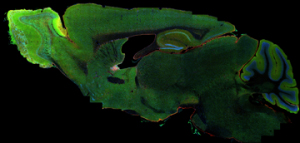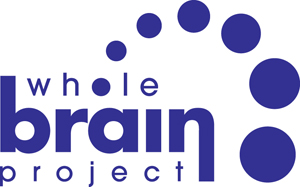New Data and Visualization Tools for the Whole Brain Catalog
San Diego, Feb. 18, 2010 -- Researchers from the Center for Research in Biological Systems (CRBS) at the University of California, San Diego have rolled out beta version 0.7.5 of the Whole Brain Catalog™. In this beta version, developers have improved features to enhance the Catalog's usability as a free, open access environment in which neuroscientists can contribute, share and analyze data.
|
Over 200 brain regions from the Allen Brain Atlas are now available through the Whole Brain Catalog™. Previously, only five brain regions from the Allen Atlas were available to the user, along with 30 mouse brain regions from the Waxholm-Space Brain Atlas. The broader integration of the widely used Allen Brain Atlas improves the Catalog's multi-scale 3D imaging capabilities as well as its effectiveness as a reference tool for neuroscience data analysis by maximizing consistency across neuroanatomical reference resources.
As a result, the Catalog now provides full Allen region support to the user, as well as a more detailed and elegant 3D virtual mouse brain for researchers to explore and use as a framework for data analysis.
"The brain is the most complex structure in the universe with billions and billions of nerve cells -- as many neurons as there are stars in the Milky Way, and even more glial cells," said CRBS Director Mark Ellisman, lead scientist on the Whole Brain Project, a professor in the department of neurosciences at UC San Diego and academic participant in the California Institute for Telecommunications and Information Technology (Calit2). "We're building a next-generation research environment to effectively collect, connect, share and communicate the billions and billions of gigabytes of data produced by researchers world-wide. Thanks to Ted Waitt's vision and the Waitt Family Foundation's commitment to social progress, scientific exploration, and gateways to knowledge, we're entering a new frontier and making new connections with the global neuroscience community to openly share their work and cooperatively explore the burgeoning new discoveries about brain structure and function."
The Whole Brain Catalog™ offers a powerful information integration tool to allow scientists to peer deep inside a virtual mouse brain to see their data in the context of datasets contributed from around the world -- all from their personal computer. Improved 3D controls facilitate the journey through this virtual environment by making the newly expanded mouse brain model more accessible and easier to manipulate. The Catalog's interface now more clearly displays attribution information of data in the environment to better allow researchers to be credited for their data.
Researchers can access and navigate this "brain information system" via the Internet, much as students and consumers currently navigate today's ubiquitous geographic information systems (GIS), including Google Earth™ and MapQuest™. With a few clicks of the mouse, researchers can increase the explanatory power of their own scientific datasets by intermixing them with datasets contributed by others from around the world. Much as a motorist or homeowner might use Google Maps™ to get directions or find a house, scientists can zoom in for a "street view" perspective of their datasets uploaded to the Whole Brain Catalog™, allowing them to understand the broader context of their research, and even explore alternative routes to new insights by reusing data imported from other researchers.
Developers are currently working on new features that will broaden the Whole Brain Catalog's data visualization capabilities for future releases. Volume rendering support is under construction so that users will be able to upload and view their own 3D data sets. Round-trip simulation support is also in design so that the Catalog can one day execute dynamic simulations of neural events from within its interface.
|
Background
The Whole Brain Catalog™ is the flagship of the Whole Brain Project™, developed with generous support from the Waitt Family Foundation. CRBS neuroscientists and software engineers joined forces to establish the Whole Brain Catalog™ and rely on the Neuroscience Information Framework (NIF), a dynamic web search engine of neuroscience resources supported by the National Institutes of Health Blueprint for Neuroscience, and the Cell Centered Database (CCDB) as core infrastructural components.
The Catalog is undertaken in cooperation with the International Neuroinformatics Coordinating Facility (INCF), an international consortium established by the OECD Global Science Forum. The Catalog accesses the INCF's Blue Gene supercomputer to rapidly simulate available brain models. The system also uses supercomputing resources available at UC San Diego.
Future phases of this new tool will rollout in the coming year, and the Whole Brain Project™ team in the Center for Research in Biological Systems at UC San Diego plans to further engage the scientific community in creating a strategic roadmap for the Catalog's continued development.
Media Contacts
Doug Ramsey, 858-822-5825, dramsey@ucsd.edu
Related Links
Whole Brain Catalog
Cell Centered Database
CRBS
NCMIR
Neuroscience Information Framework



